Modeling MinA and MinB
Simple model of gradient diffusion
Skills
- Matlab
Pattern formation in Escherichia coli: A model for the pole-to-pole oscillations of Min proteins and the localization of the division site
Intro
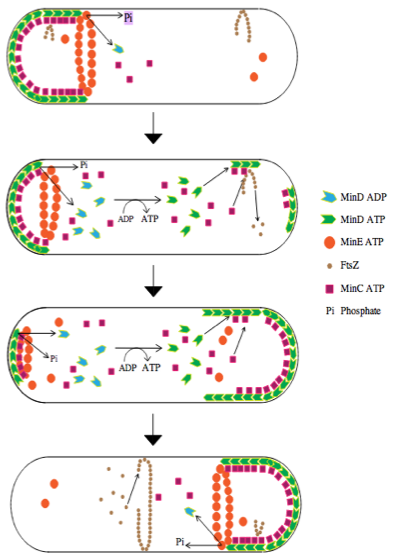
The positioning of the division plane is one of essential processes that allow a proper cell division in all organisms. In E.coli this plane is determined by a polymeric ring of the FtsZ protein. The site of the ring assembly is controlled by the Min system that suppresses any FtsZ assembly at non-central position. The Min proteins perform a highly dynamics behavior, with a constant pole-to-pole oscillations during the cell cycle. In this project, we build a model using the equations described by Meinhardt et al. that reproduce the behavior of the system. We reproduced the main features of the system. However, the model we use had a lot of simplifications and requires some assumptions. Although, it was consistent with experimental results. Several improvements could still be done to have a better fit to the experimental data. However, even with such a simple model we were able to introduce new features such as chromosome segregation performed by MinD oscillations.
Project
In this project we
- reproduce work of Hans Meinhardt and Piet A. J. de Boer from their article
- implement ODE in matlab using Euler method
- plot results in a form of heatmap
- create dynamic modelisation of the model in time scale
- we propose a simple model to model DNA division according to Di Ventura et al.
- we illustrate the chromosome division model alltogether with MinA MinB model
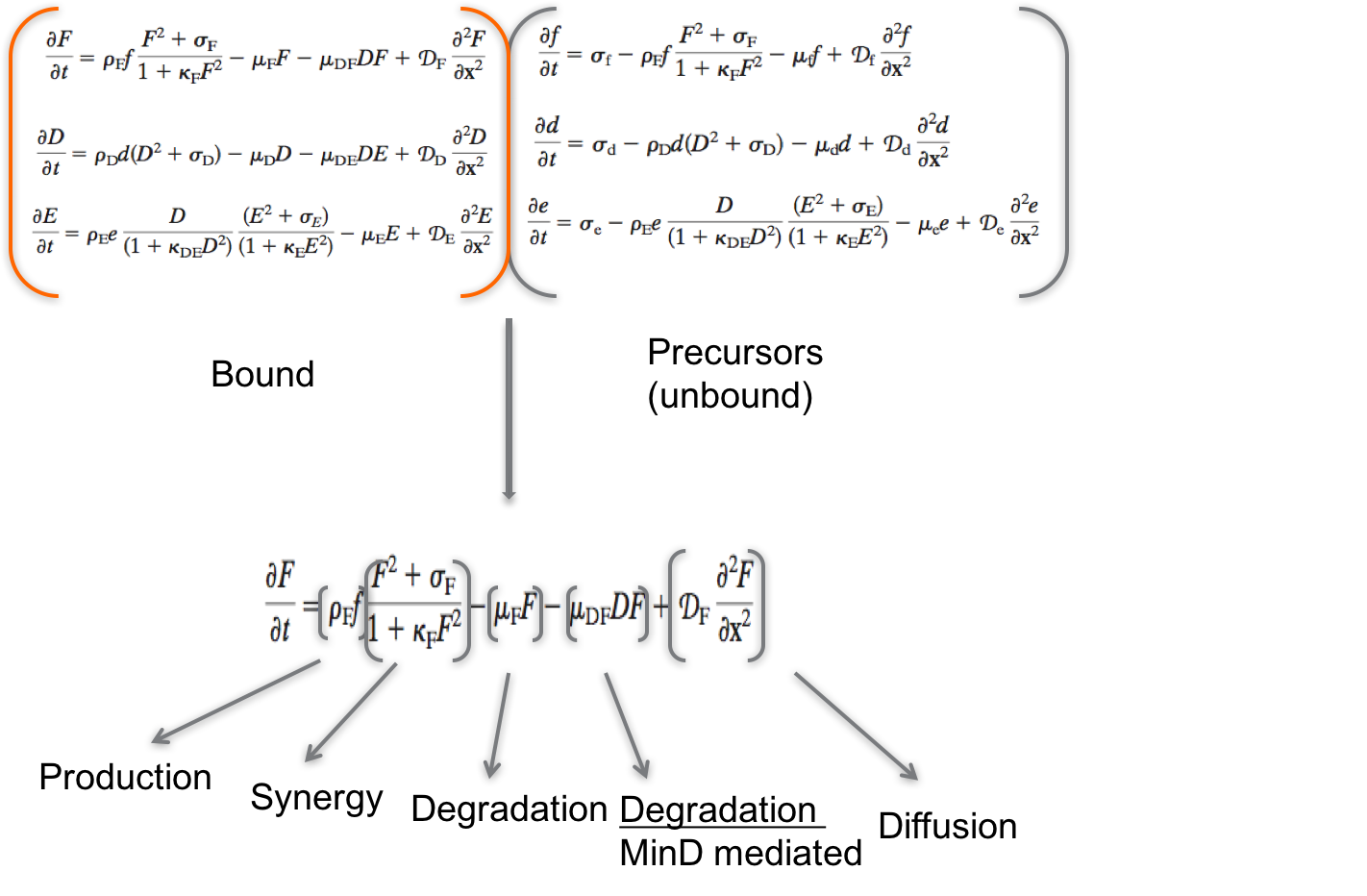
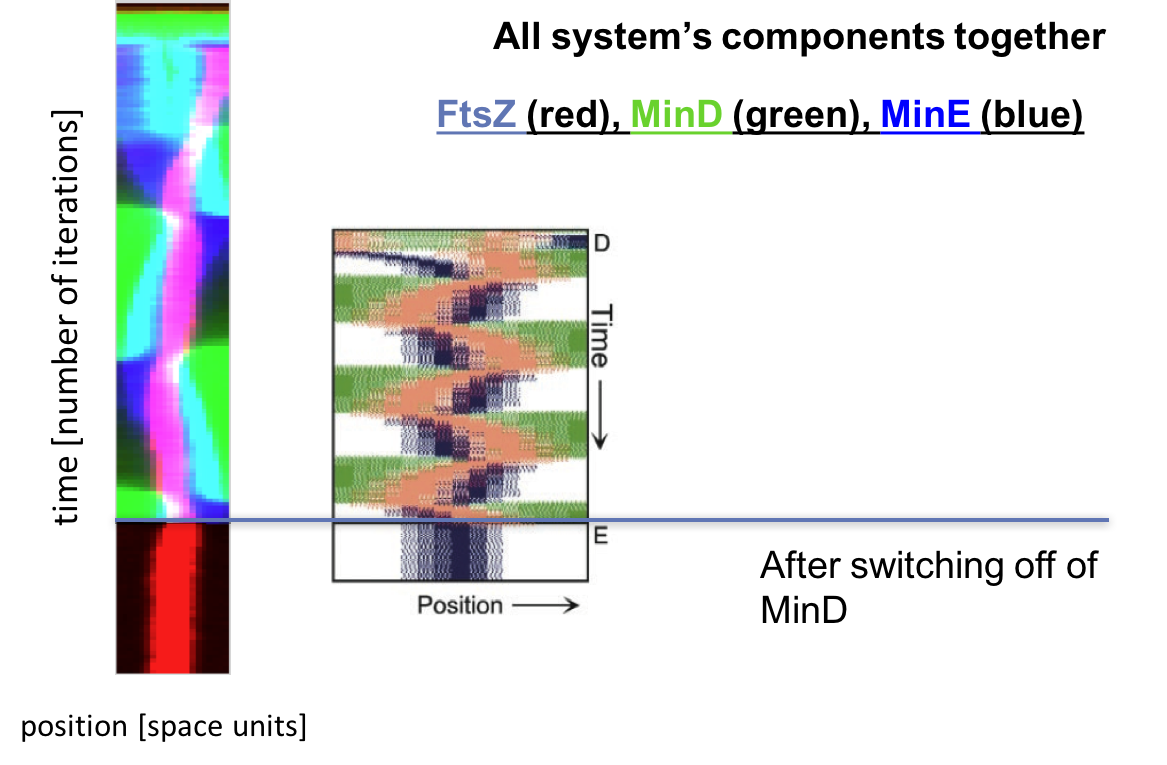
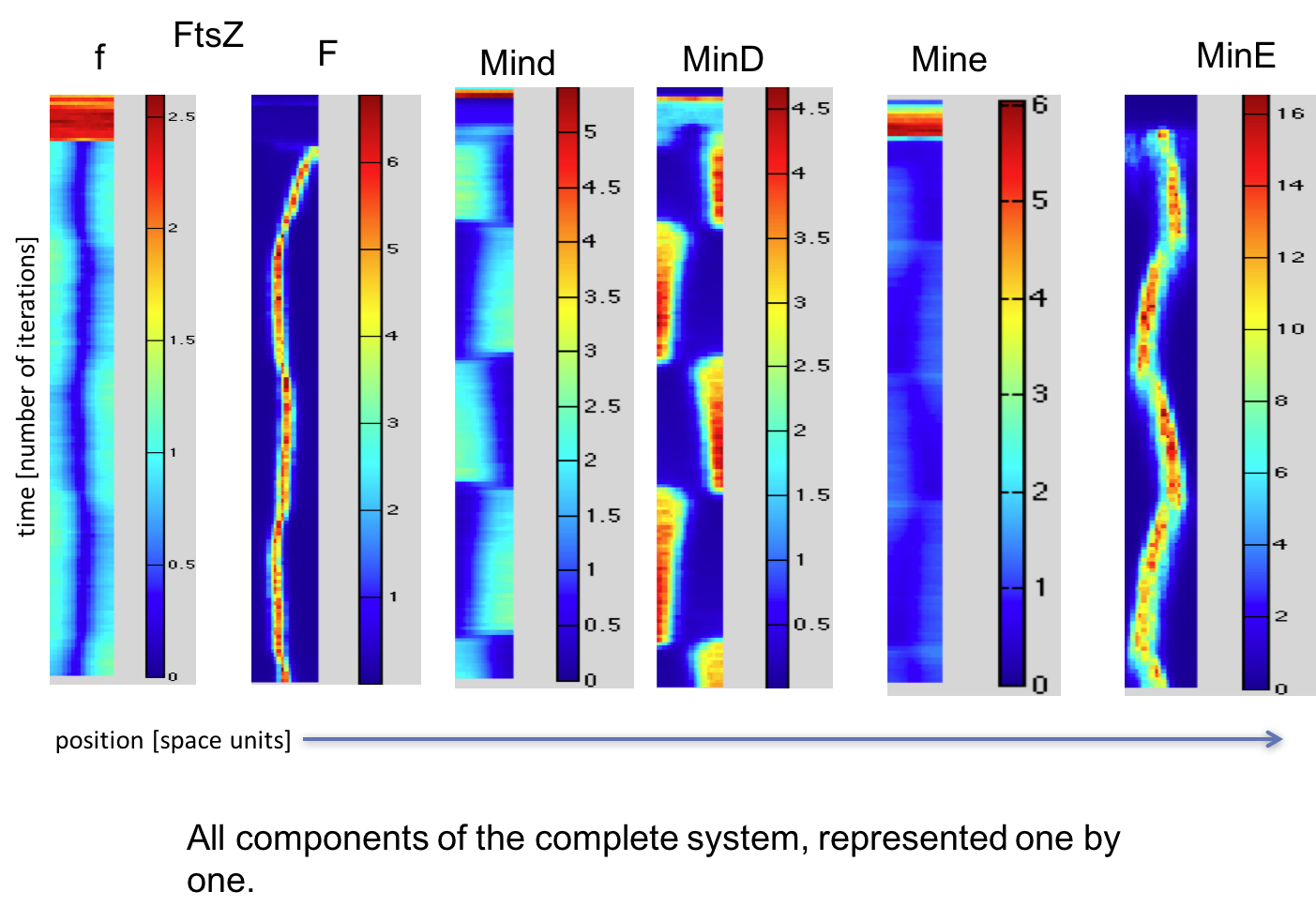
Source code is accessible at github
Presentation can be acessed here
Full report can be seen here
Movie can be seen here
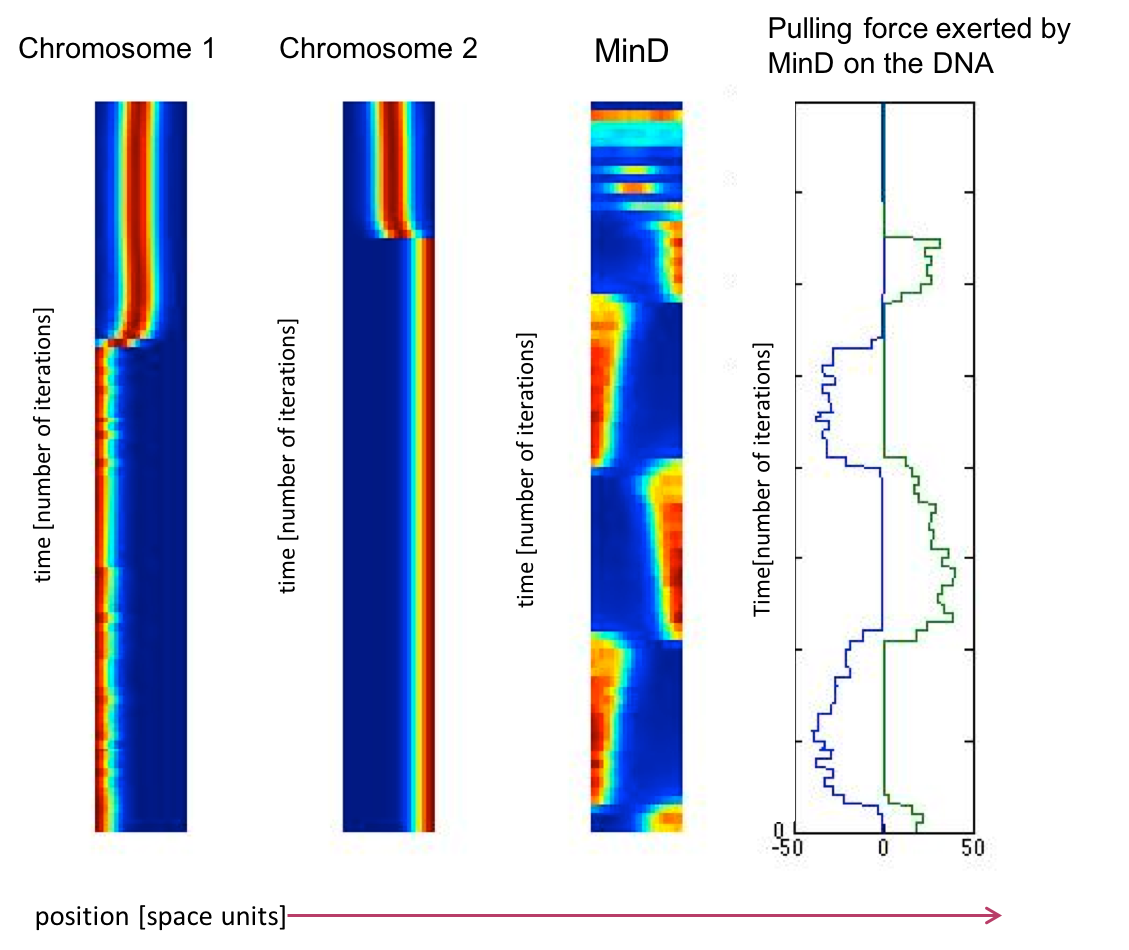
Conclusions
- E.coli proteins MinD/C, MinE and FtsZ dynamics can be modeled
- The model is robust and reproductible
- Severals improvments of the model can still be done (detailled steps, precision/variation of some parameters, spatial diffusion…)
- MinD Oscillations can be used to perform chromosomes segregations during the division
Authors
This code is a joint effort of myself Urszula Czerwinska and Henry de Belly who equally contributed to this work during our modeling class and in our free time. Big acknowledgement to our tutor Timo Betz